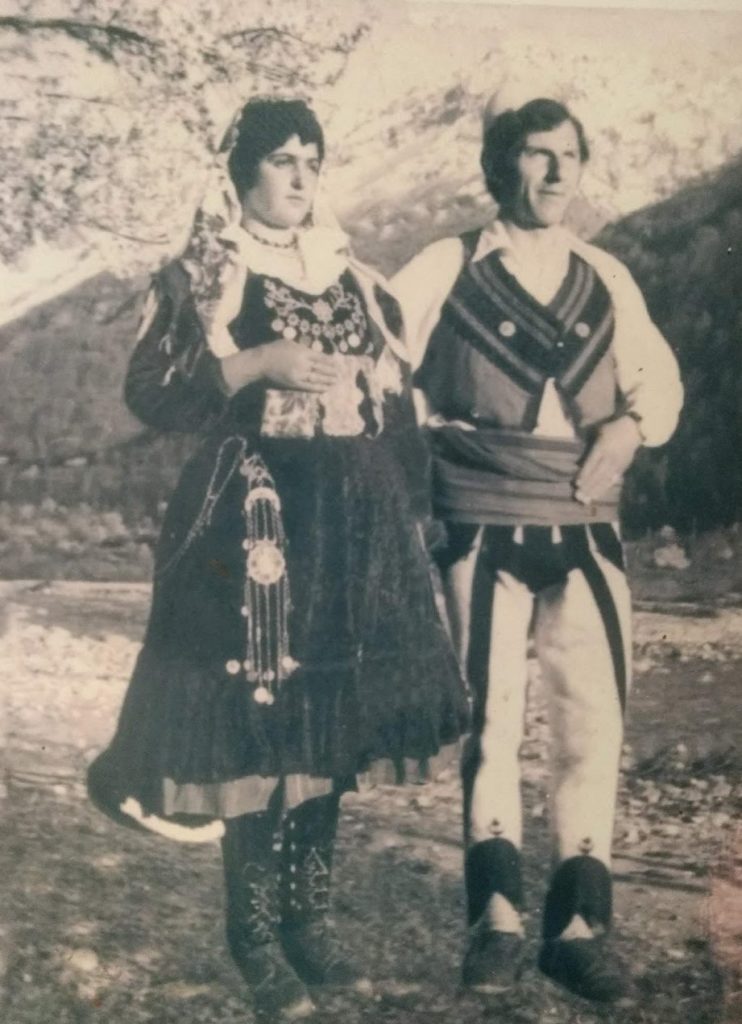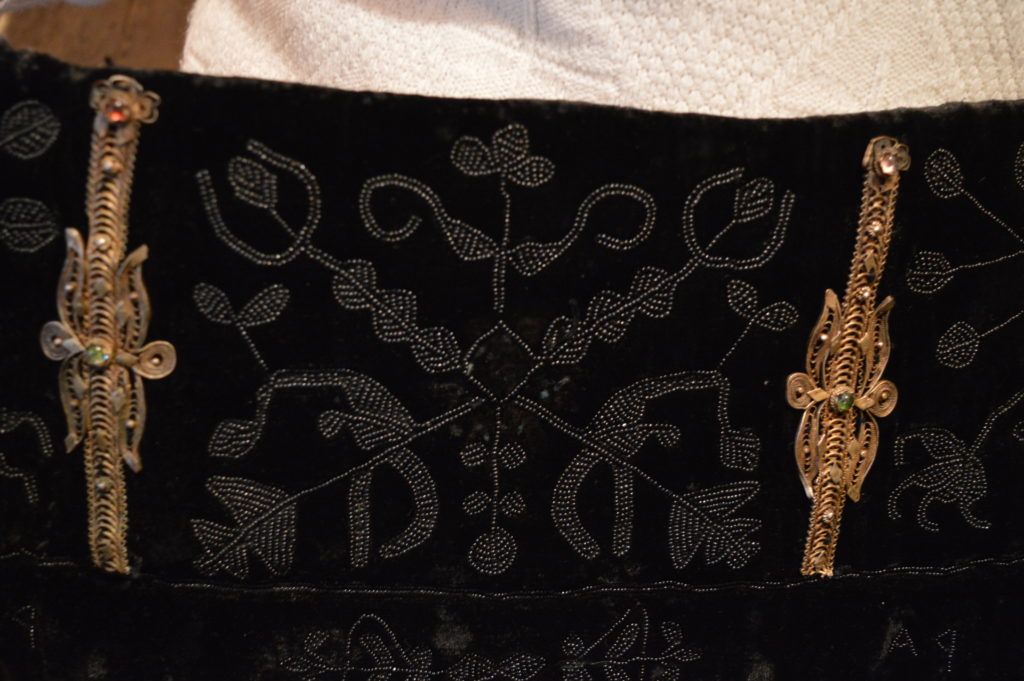Age
Age, Vermosh, Interviewed November 12th 2018
Age currently lives with her son and daughter in law at a guest house that they run in Vermosh, near the border of Montenegro. Situated uphill from a riverbed that can fill and cut them off from the road on the other side, their home houses tourists for parts of the year. Outside the house sits a variety of hand tools and machinery, some for crafting tools for making clothing. Upstairs, her daugher in law keeps a room with xhubleta and other traditional clothing on display.
Age wore her first xhubleta when she was seven. At that age, it was obligatory in her area to start wearing a black and white xhubleta, which showed the transition from childhood to girlhood. To her, it was not an unusual or special experience to start wearing her xhubleta, given that it was the commonplace.
With this transition to girlhood, Age remembers she now had to act certain ways and follow a code of conduct dictated by her community. From then on, she wore a xhubleta as her everyday attire, as was normal to do.
“It was my mother that told me that I have to wear xhubleta now and you have to act like a girl not as a child anymore so this is the wearing the xhubleta for the first time was the first process of growing up. It was more or less to give a little bit of authority to the of the costume that I was wearing.” – Age
From age seven until she got married, she owned only two xhubletas. One was for everyday life and work, while the other was reserved for special occasions such as going to church or the bazaar. As she wore these, Age began crafting the five xhubleta she would need for her married life.
She began learning to make her xhubleta when she was nine, working “little by little” with the help of her mother to carry out the entire process. Focusing all of your energy into the work, a xhubleta can be finished in around two months, she says.



